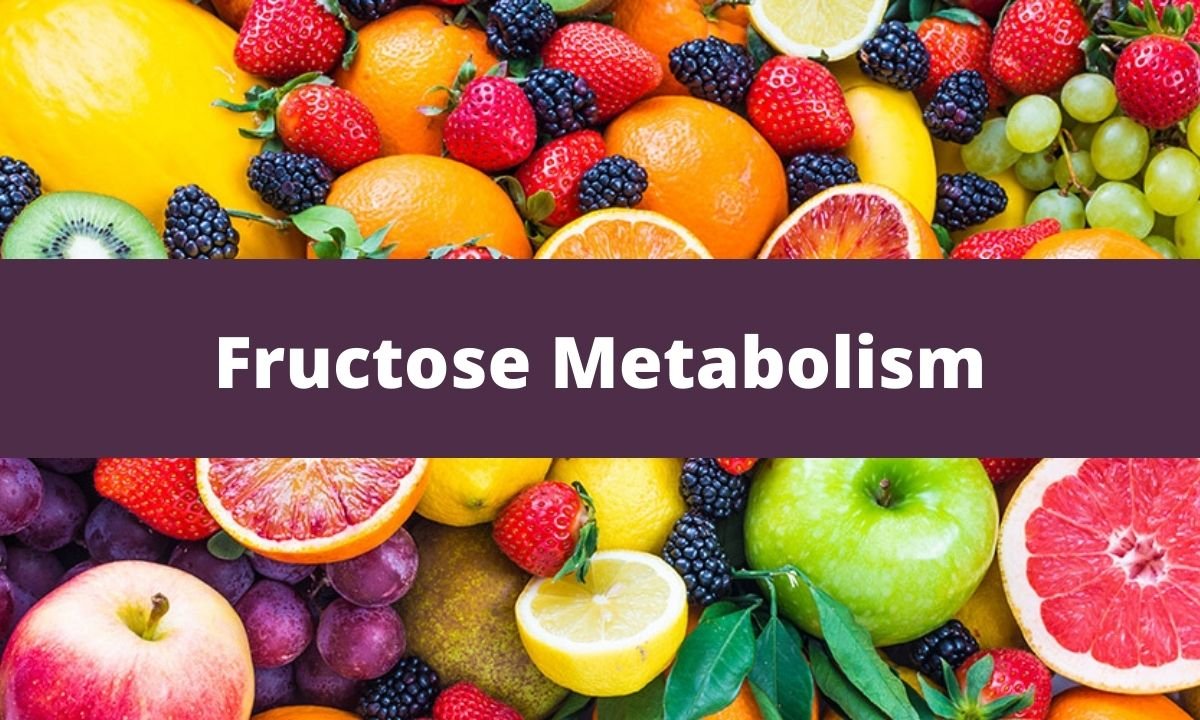Astigmatism is a type of refractive error wherein the refraction varies in different meridian of the eye. So, rays of light entering the eye cannot converge to a point focus, but form focal lines.
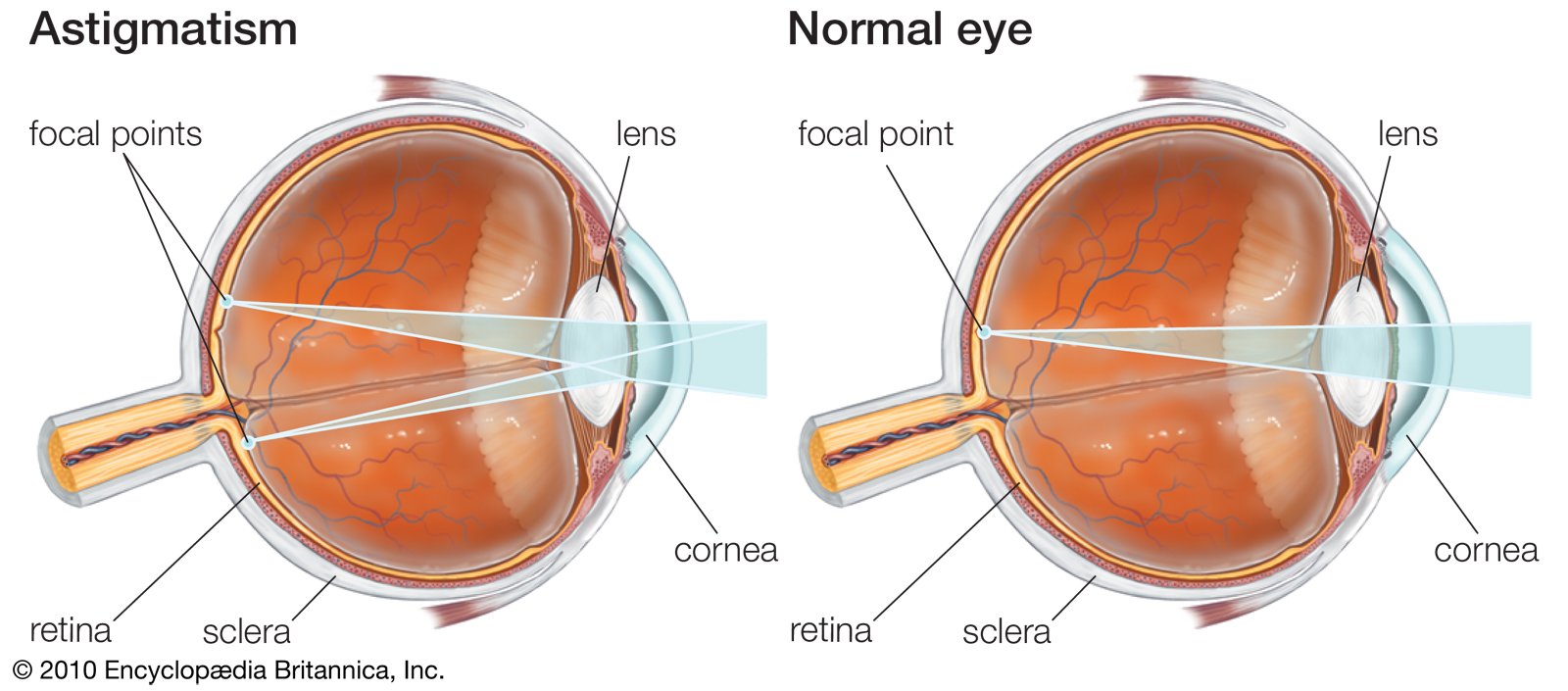
Types
- Regular Astigmatism- Regular astigmatism results in the formation of two focal points.
- Irregular Astigmatism- If there are more than two focal points, the astigmatism is defined as irregular.
Regular Astigmatism
Astigmatism is regular when the refractive power changes uniformly from one meridian to other (there are two principal meridians).
Etiology-
- Corneal Astigmatism: Abnormalities in the curvature of cornea.
- Lenticular Astigmatism:
- Curvatural ( lenticonus)
- Positional (subluxation/oblique placement of the lens)
- Index (different refractive)
- Retinal Astigmatism: Oblique placement of Macula
Optics of Regular Astigmatism-

Strum’s conoid: Configuration of rays refracted from a toric surface is called as ‘Strum’s conoid‘
Point A: Vertical rays are converging more than horizontal rays, so section here is horizontal oval or an oblate ellipse.
Point B (first focus): Vertical rays have come to the focus, while horizontal rays are still converging, so section formed here is horizontal line
Point C: Vertical rays are diverging and their divergence is less than then convergence of horizontal rays, so horizontal oval is formed.
Point D: Divergence of vertical rays is equal to the convergence of horizontal rays. Section here is circle which is called ‘circle of least diffusion’.
Point E: Divergence of vertical rays is more than convergence of horizontal rays, so section here is vertical oval.
Point F (second focus): Horizontal rays have come to the focus while vertical rays are diverging, so here vertical line is formed.
Point G (beyond F): Both horizontal, vertical rays are diverging, so section will be vertical oval or prolate ellipse.
Focal interval of strum: Distance between two foci ( B and F).

Types of Regular Astigmatism-
- WTR (With the Rule) Astigmatism:
- Principal meridians are placed at right angle to each other but vertical meridian is more curved than horizontal.
- ATR ( Against the Rule) Astigmatism:
- Horizontal meridian is more curved than vertical meridian and are at right angles
- Oblique Astigmatism:
- Two principal meridians are not horizontal and vertical, though these are at 90° , e.g. 45° and 135°.
- Bi-oblique Astigmatism:
- Two principal meridian are not right angle to each other e.g. 30° and 100°
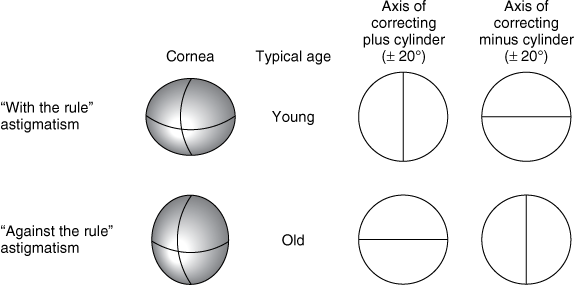
Refractive types of Regular Astigmatism-
- Simple Astigmatism:
- Rays are focused on retina in one meridian and in other meridian either in front or behind the retina
- Compound Astigmatism:
- Rays of light in both the meridian are focused either in front or behind the retina
- Mixed Astigmatism:
- Rays of light in one meridian are focused in front and in other meridian behind the retina.
- Thus in one meridian eye is myopic and in other hypermetropic.
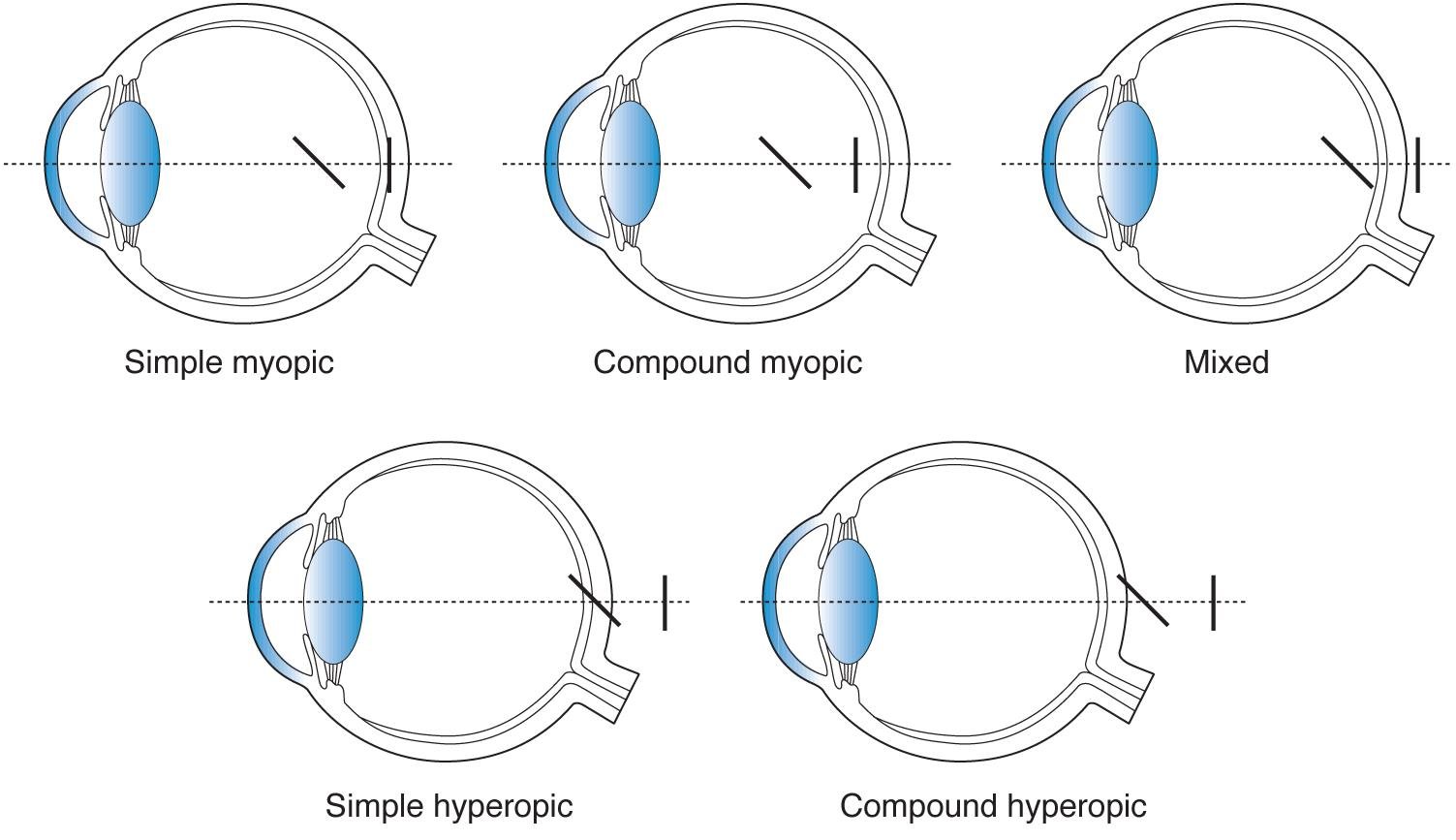
Clinical features-
Symptoms:
- Blurred vision, defective vision
- Asthenopic symptoms– difficulty in focusing, dull ache in eyes, headache
- Elongation of objects– proportionate to the degree and type of astigmatism
- Keeping the reading material close to the eyes
Signs:
- Half closure of lid
- Head tilt
- Oval or tilted optic disc
- Different power in two meridians ( on retinoscopy)
Management-
Investigations:
- Retinoscopy- different power in two meridians
- Keratometry- different corneal curvature in two meridians in corneal astigmatism
- Astigmatism fan test
- Jackson’s cross cylinder test
Treatment:
- Optical:
- Appropriate cylindrical lens
- Spectacles with full correction
- Contact lenses- Rigid contact lens for upto 2-3D
- For higher degrees of astigmatism, toric contact lens are needed
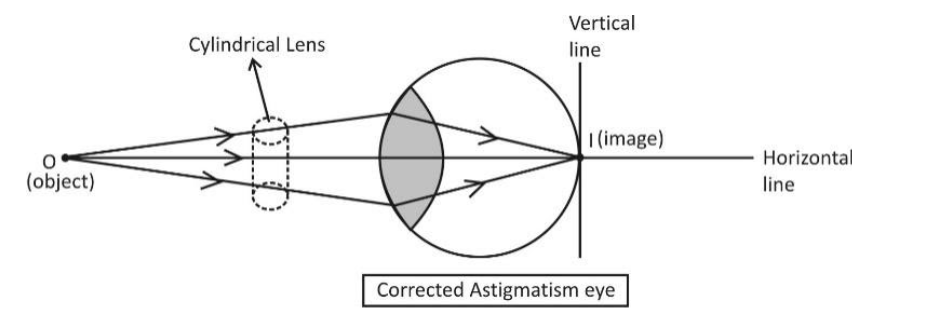
- Surgical:
- Astigmatic keratotomy
- PARK (Photo Astigmatic Refractive Keratotomy)
- LASIK
- SMILE procedure
Irregular Astigmatism
Irregular change of refractive power in two meridians.
Etiological-
- Curvatural: keratoconus, corneal scar
- Index: variable refractive index in different part of lens ( in cataract).
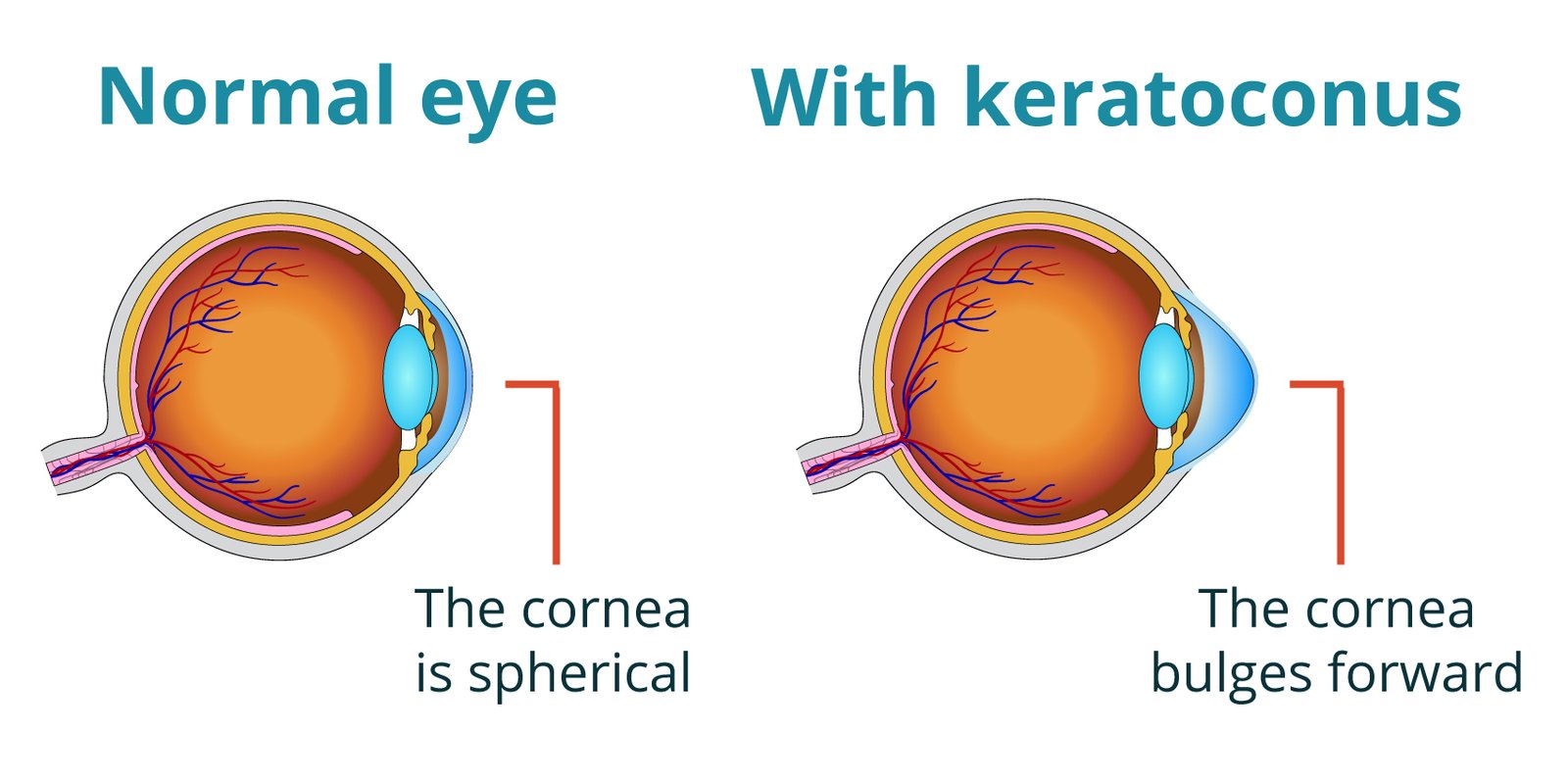
Clinical features-
Symptoms:
- Defective vision
- Distortion of objects
- Polyopia
Signs:
- Irregular pupillary reflex on retinoscopy
- Keratoconus on slit lamp examination
- Distorted circles on Placido’s disc
- Irregular corneal curvature on photo keratoscopy and corneal topography
Treatment-
- Optical:
- Contact lens which replace the anterior surface of cornea
- Laser:
- Phototherapeutic keratectomy with excimer laser
- Surgery:
- It is done in extensive corneal scarring
- Penetrating keratoplasty or Deep anterior lamellar keratoplasty




